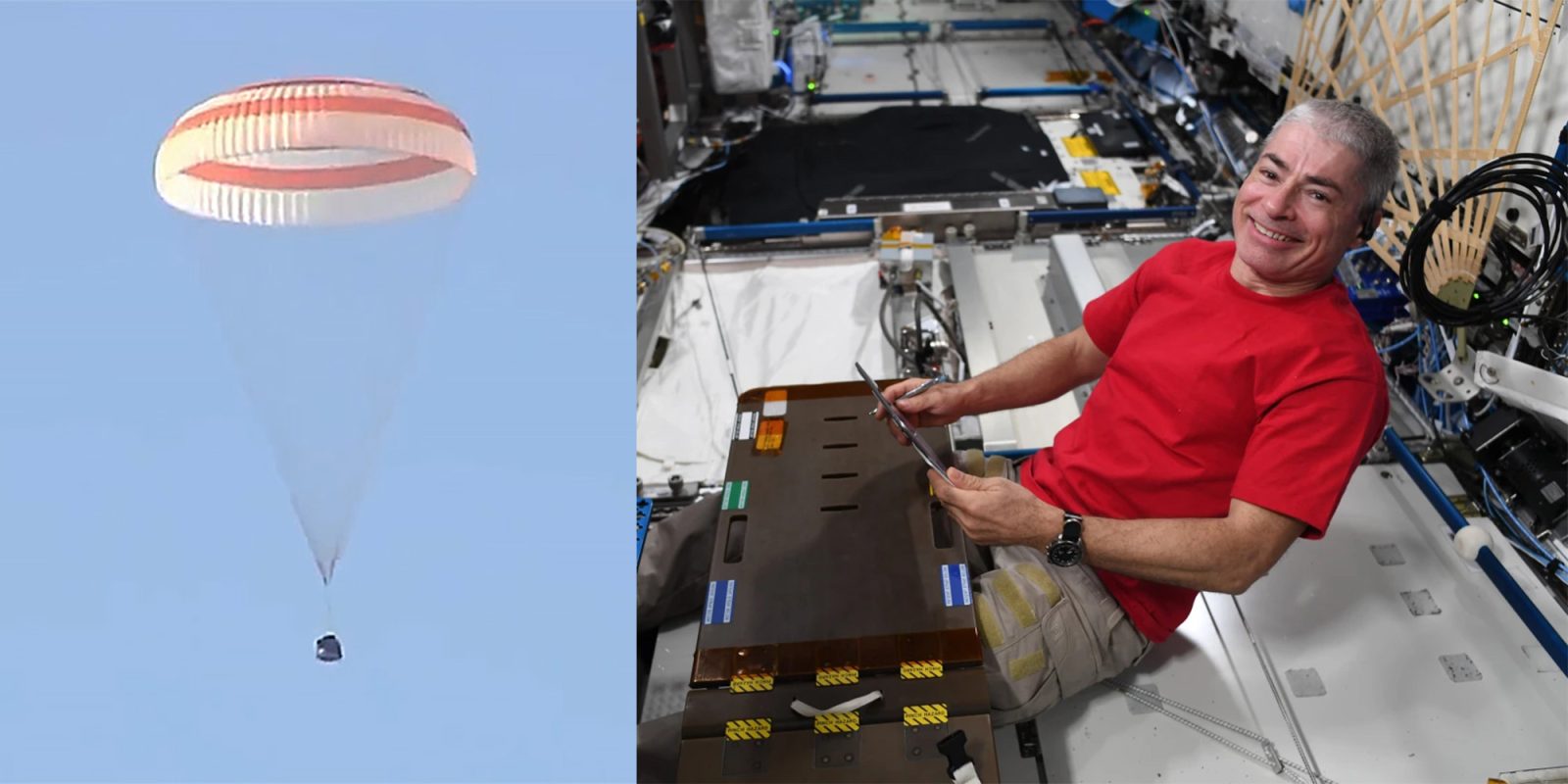
Early this morning up in orbit, three crew members departed the Russian side of the International Space Station. In that spacecraft was NASA astronaut Mark Vande Hei, the new record holder for the longest time spent in space by a US astronaut.
Vande Hei and Roscosmos cosmonauts Anton Shkaplerov and Pyotr Dubrov departed the space station in a Russian Soyuz spacecraft at 3:21 a.m. EDT. A few hours later, the three landed via parachute at 7:28 a.m. EDT in Kazakstan. Many feared Vande Hei would end up stranded in space due to Russia’s conflict in Ukraine. However, as expected, Roscosmos assisted in the astronaut’s return and allowed the usual NASA contingent to be there when he landed.
From the landing zone, Vande Hei was taken to the nearby city of Karaganda, where he boarded a NASA Gulfstream for the flight back to Houston. The cosmonauts took a separate ride back to Star City near Moscow. This is standard procedure for Soyuz crew returns.
Final NASA/Roscosmos flight to ISS?
Many have speculated if this will be the final time Russia and NASA will ride together to or from the space station. The answer is most likely no. While Roscosmos’ directer, Dimitry Rogozin, has continued to shout anti-American rhetoric on social media, he’s been doing this for years, and nothing has phased the mission controllers so far, who are still cooperating with NASA.
If Roscosmos did share its leader’s view, they didn’t show it during the live coverage. Instead, everything was business as usual, even sharing a “Welcome Back, Mark” message on the large screen in Russia’s mission control.
While NASA has yet to announce any formal agreement to swap seats between the Soyuz and SpaceX Dragon launches yet, all signs point to it happening at some point in the future.
Mark’s record breaking 255 day stay in space
Vande Hei’s stay started as a regular six-month stint in the orbital laboratory, unlike NASA’s previous year-long study in space. However, an opportunity arrived when Roscosmos launched its commercial mission of two filmmakers to the station last fall. This opened up NASA and Roscosmos to do another long-duration stay.
Vande Hei was in space for 255 days, making it the longest stay in space for NASA. This extended stay meant researchers had more data to study the effects of microgravity on the human body. The more we stay and learn about the human body in LEO, the better off we will be when we begin long durations trips to the Moon and Mars.
FTC: We use income earning auto affiliate links. More.



Comments